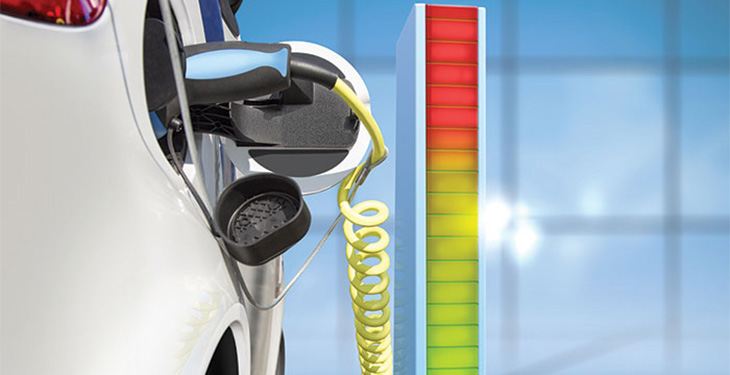The main advantage of electric cars is the fact that they pollute less. The list of disadvantages is longer: the relatively high price, no charging infrastructure and reduced range. The hybrid technologies, the government grants and especially the enthusiasm for researching and developing solutions support a new revolution for personal and freight transport in the upcoming decades. We found out from Shane Dowling, General Manager of ALD Automotive, how things look today in Romania and what options are available for an early adopter of automobile market trends.
The first charging station for electric cars was inaugurated in Romania in 2011, at Transelectrica, in the Unirii Square area in Bucharest. Even at the time there were discussions on partnerships between important automobile producers and companies such as Electrica, Schneider Electric and Siemens, for the development of the necessary infrastructure for electric cars. Where are we today and which are the solutions of an electric car owner?
At the moment, there are 20 charging stations for electric cars in Romania, most of which are in Bucharest. They may seem enough, if we consider that in the first six months of 2015 only 16 electric cars were sold, according to the latest APIA reports. This brings the number of electric and hybrid cars, both new and second hand, registered in Romania, at little over 100, in the past five years.
that in the first six months of 2015 only 16 electric cars were sold, according to the latest APIA reports. This brings the number of electric and hybrid cars, both new and second hand, registered in Romania, at little over 100, in the past five years.
However, it is clear that a long drive with an electric car in Romania still is practically impossible, due to the small number of charging stations. On the other hand, the low number of electric cars on the roads did not urge the authorities to invest in infrastructure. Thus, at least in the next stage, the future of electric cars depends on the consistency of the measures to be taken in two major fields: the support granted to building electric charging terminals, and the financial incentives granted for buying electric cars.
At the present time, an electric car owner may only use, besides the existing charging stations, the standard sockets in houses or offices, which considerably extends the charging time. In the future, APIA proposes that all public parking lots (for supermarkets, blocks of flats, office buildings) be built with facilities for electric cars. Taking such a measure, as well as granting incentives for financing a national network of charging terminals, may become a major influence factor in the purchase of an electric vehicle.
If we are talking about electric cars sales, in spite of the interest shown by manufacturers, dealers and buyers, the reality is that we are at the bottom of the European countries ranking in this matter. Furthermore, by 2030 we must also be aligned with the European Commission directives, which state that all countries must cut to half the number of vehicles using conventional fuels and that, by 2050, these should progressively disappear from the cities. Therefore, a need arises for taking quick measures that shall further increase the interest of consumers towards these vehicles.
At the moment, a supply of electric cars exists on the Romanian market, but the acquisition prices are not very attractive and the significant subsidies for such purchases are still on hold. Currently, Romanians can use the „Rabla” programme, with differential eco-bonuses, which are added to the RON 6,500 scrappage premium, with the possibility of adding up two eco-bonuses. Recently the Government introduced two more eco-bonuses one of RON 20,000, for a new electric vehicle, and one of RON 5,000, for a new vehicle with a hybrid propulsion system, with a value of CO2 emission below 50 g/km.
Besides the aids provided by the officials, APIA and the dealers propose other measures which may persuade the clients to buy such cars. Among these we mention the possibility to use special and free parking spaces anywhere in the large cities or the exemption from the payment of VAT, vignette or tax for 3 years. Furthermore, lately, producers have introduced several electric vehicle models on the local market and we hope these will attract more customers, which will also lead to the development of the required infrastructure. It is a trend for the future and, sooner or later, we shall adopt this European eco tendency for vehicle fleets.
An electric car with top start-up and a range of over 400 km may be purchased for more than 100,000 euros. Which are the electric cars available in Romania and what is their price range? What are their technical performances, especially regarding range and safety?
On the international market, the prices for an electric car vary between 20,000 and 130,000 euros. At the moment, on local market buyers may choose between a Mitsubishi iMiEV, a Renault Zoe, a Renault Twizy, a Kangoo Z.E. or a Volkswagen e-Up!, as well as second hand models, from brands not yet established in Romania. This means that in the future, using the subsidy introduced by the Government, in the amount of RON 20,000 per electric vehicle, such a car shall be purchased for a price starting from 14,000 euros.
The performances and endowments differ from one model to another, just like any type of car, and when the price goes up, so shall the facilities, making electric cars a satisfying choice for more and more types of customers. They are equipped with safety systems for the driver and passengers, which turn them into a reliable solution both in the city and for the long drives. A very important factor for choosing an electric car is the battery range. Depending on the type of vehicle and manner of use, the range may differ greatly from one model to another, which is an extremely important factor for long trips. For the models present on the European market the range varies between 130 km and 480 km, and for the models sold in Romania, the range reaches a maximum of 200 km for the small cars, which makes long trips very difficult, particularly in our country, due to the highly limited infrastructure.
What are the financing solutions for reducing the burden of buying an electric car?
First of all, I believe that the most discussed opportunity is the subsidy introduced by the Romanian government for the purchase of eco-cars (RON 20,000 for an electric car and RON 5,000 for a hybrid car), which will be supplemented by the scrappage premium and the eco bonuses, representing important discount for the client. However, there are also the classic financing solutions, usually meant for companies, so that an electric or hybrid car may be bought by means of an operational or financial leasing agreement.
For companies, the most efficient solution for purchasing a fleet of electric cars is the operational leasing, thanks to the multiple advantages provided by such an agreement. Amongst these we mention: the consultancy provided before the sale and during the entire contractual period, the monthly fixed rate, the access to maintenance services with authorized providers, as well as the fact that the holder will not have to manage the vehicle resale at the end of the leasing agreement. This final aspect is very important, especially in the case of electric cars, which undergo visible updates from one generation to another, thus leading to a greater need for change at regular intervals.
Most definitely the number of purchased eco cars will increase in the future in Romania, when companies shall replace at least a part of their fleets with hybrid or electric cars. Several companies in the market are already showing their interest and the acceleration of this tendency shall lead an important drop in the pollution degree and in the negative impact of fuel consumption on the environment.
The hybrid car (fossil fuel + electricity) appears to be the current compromise solution – meaning the next decade. What are the models available in Romania and what are their technical performances, depending on the price?
Hybrid cars have been present for a longer time on the market, including in Romania, and have more followers, due to an easier accommodation to infrastructure conditions. There are many types of hybrid cars (classic or plug-in hybrid) and their advantage is that they adapt easier to the owner’s lifestyle and driving habits. The facilities also vary from one model to another and are fully comparable to the ones provided by the classic cars.
Currently, clients may choose from a larger variety of hybrid cars, in different price ranges, starting with Opel, Ford, Mitsubishi or Toyota models and ending with hybrid cars from BMW, Porsche or Lexus.
————————————-
The full version of this article can be read in printed edition of energynomics.ro Magazine, issued on September 2015.
In order to receive the next issue (December 2015) of energynomics.ro Magazine for free, we encourage you to write us at [email protected] to include you in our distribution list.
